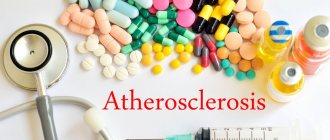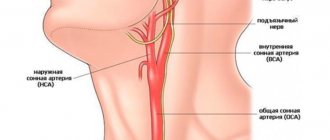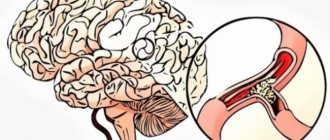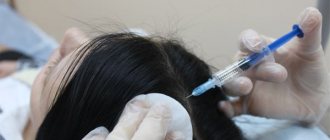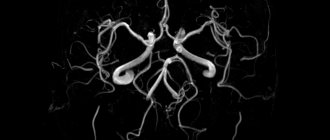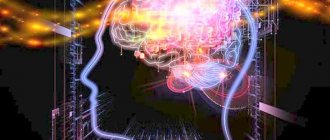Description of the disease
The main symptoms of VSD:
- noise in ears;
- lack of air;
- panic, excitement;
- nausea;
- lack of coordination;
- fainting.
At an early stage, it is quite difficult to recognize VSD. It is usually accompanied by rapid fatigue and sleep disturbances, which leads to decreased performance. Dizziness with VSD appears a little later. Diagnosis of the disease is complicated due to the similarity of symptoms with a number of other diseases and the lack of equipment for diagnosing it.
The main reasons for the development of VSD:
- heredity;
- hormonal disbalance;
- stress;
- obesity.
Diagnosis and treatment of vascular dizziness
Contacts Test for spinal diseases
| About Us |
| Catalog |
| Sign up for an MRI |
| Buy Stayer disk |
| Program "Stop Osteochondrosis" |
| Reviews |
M.Yu. Martynov Department of Neurology and Neurosurgery of the State Educational Institution of Higher Professional Education of the Russian State Medical University of Healthcare, Moscow Contacts: Mikhail Yurievich Martynov
CLINICIST No. 4\'2007
The article presents the main causes of development and clinical manifestations of acute and chronic cerebral vascular insufficiency in the vertebrobasilar system. The main directions of diagnosis and treatment are considered, including the effectiveness of prescribing combined vasoactive and metabolic drugs. Key words: vertebrobasilar insufficiency, dizziness, vasoactive and metabolic drugs DIAGNOSIS AND TREATMENT OF VASCULAR VERTIGO M.Yu. Martynov Department of Neurology and Neurosurgery, Agency for Health Care, Moscow
The paper gives the principal causes and clinical manifestations of acute and chronic cerebrovascular insufficiency in the vertebrobasilar system. It considers the basic lines of its diagnosis and treatment, including the effectiveness of use of combined vasoactive and metabolic drugs. Key words: vertebrobasilar insufficiency, vertigo, vasoactive and metabolic drugs
Definition and classification
Dizziness is defined as an illusory movement of a stationary environment in any plane and as a sensation of rotation or movement of one's own body in space. The main cause of dizziness is the mismatch of incoming information between receiving systems. There are systemic and non-systemic dizziness. The first is a false sensation of rotation or movement of one’s own body or surrounding objects. Systemic vertigo is divided into peripheral and central. Peripheral dizziness is associated with damage to the peripheral perceptive apparatus, central - with the involvement of the brain stem and cortex. Unsystematic dizziness is a feeling of motion sickness, unsteadiness of the surrounding space. Etiology and pathogenesis Dizziness in neurological practice can be observed in demyelinating diseases (multiple sclerosis), brain tumors, and temporal lobe epilepsy. However, most often dizziness occurs with acute and chronic cerebral vascular insufficiency, and primarily with the involvement of the vertebrobasilar area. The main causes of acute and chronic cerebral vascular insufficiency, including vertebrobasilar disorders, are arterial hypertension, atherosclerosis and their combination. Less commonly, cerebral vasculitis of various etiologies, systemic vasculitis, aneurysms, blood diseases, heart diseases, rhythm disturbances and other conditions can lead to the development of cerebrovascular insufficiency. Cerebrovascular accidents may be associated with increased viscosity, aggregation of blood cells, changes in the coagulation and anticoagulation systems of the blood [1, 2]. In the development of vertebrobasilar insufficiency, an important role belongs to the pathology of the great vessels of the head. Lesions of the cervical spine (osteochondrosis) affect cerebral blood flow through compression and spasm of the vertebral arteries. Among extracerebral factors, a major role in the development of vertebrobasilar insufficiency also belongs to the pathology of the extracranial sections of the main arteries of the head - partial or complete blockage of the vertebral arteries and their pathological tortuosity. In some cases, the development of cerebral vascular insufficiency in the vertebrobasilar region may be caused not by damage to the corresponding vessel, but by inadequate hemodynamic changes of a compensatory nature (steal syndrome) [1]. Therefore, sometimes symptoms are associated with the pool of an uninjured vessel. Under certain conditions, collateral circulation occurs in physiologically unjustified forms. This unique mechanism of cerebrovascular accident in the brain occurs when the proximal branches of the aortic arch (subclavian, innominate and common carotid arteries) are blocked. There are various forms of the “steal” syndrome. Thus, with subclavian “steal” syndrome due to blockage of the initial segment of the subclavian artery, the vertebral artery on the side of the blockage functions in relation to the arm as a collateral through which, to the detriment of the brain, retrograde blood flow is carried out from the vertebrobasilar system to the arteries of the arm. When you work hard with your hand, blood flow to the brain decreases (“robbing”), resulting in brainstem symptoms. The phenomenon of “stealing” is also observed when other vessels are blocked: when the mouth of the external carotid artery is blocked on the opposite side, blood flow to it from the vertebral artery can be established through anastomoses of the muscular branches of the latter with the occipital artery or from the internal carotid artery through anastomoses with the ophthalmic artery. This can lead to the appearance of both brainstem and hemispheric symptoms. Clinical picture Clinical manifestations of vertebrobasilar insufficiency are different and depend on the degree and duration of cerebral circulatory disorders and the predominant localization of discirculatory phenomena [3]. Most often, discirculatory vertebrobasilar syndrome is characterized by systemic or non-systemic dizziness and vascular-vegetative disorders. Patients often feel tinnitus, sometimes headaches, often in the occipital region, rotation of the environment, in other cases there is a feeling of their own displacement, aggravated by a change in the position of the head, a “veil” before the eyes. Vascular-vegetative reactions are noted - nausea, vomiting, paleness of the face, cold sweat. Nystagmus, instability in the Romberg position, and misses during coordination tests are detected. The observed symptoms suggest irritation of the peripheral vestibular apparatus in the area of the inner ear, supplied by the branches of the basilar artery, in particular the internal auditory artery. With transient circulatory disorders in the brain stem, patients experience a feeling of lightheadedness, noise and heaviness in the head, systemic dizziness, vomiting, and hiccups are noted. There may be visual disturbances in the form of photopsia, metamorphopsia, blurred vision of objects, visual field defects; double vision, paresis of the eye muscles and gaze, convergence disorder, sensory disturbances in the face (especially around the mouth in the Zelder zones), hearing disorders, dysarthria, dysphonia, dysphagia, symptoms of pyramidal insufficiency. Alternating syndromes, disturbances in statics, coordination of movements and vestibular disorders accompanied by nystagmus are less common. General weakness, adynamia, lethargy, rapid exhaustion and pathological fatigue are often observed. Paroxysmal increases in blood pressure are detected. Vegetative-vascular syndrome is expressed in the form of attacks of general weakness with sudden sweating, tachy- and bradycardia. Attacks of sudden falling and immobility (drop attacks) without loss of consciousness are observed, occurring in patients with pathology of the cervical spine when turning and throwing back the head. Seizures are associated with a transient loss of postural tone as a result of ischemia of the olive and reticular formation. Unterharnscheidt's syncopal vertebral syndrome is similar in pathogenesis - attacks of loss of consciousness with muscle hypotension. Paroxysms are preceded by vertebrogenic headaches, visual and auditory disorders. Memory disorders are observed, especially for current events, up to severe, sometimes acutely developing memory loss. These changes are associated with damage to various structures of the limbic system and mediobasal parts of the temporal lobes. Elderly people often have simultaneous atherosclerotic lesions of the carotid and vertebral arteries. In these cases, symptoms of circulatory disorders may occur in both the carotid and vertebrobasilar areas in various combinations. Sometimes symptoms indicating damage to different pools appear simultaneously. With the predominant localization of dyscirculatory phenomena in the internal carotid artery system, the most common symptoms are those indicating pathology of the cortical parts of the brain. Most often, disturbances are observed in the sensitive area in the form of numbness, sometimes with tingling, usually limited, involving individual areas of the skin of the face, limbs, and individual fingers. In some cases, numbness appears simultaneously in half of the upper lip, half of the tongue, along the inner surface of the forearm, hand, and in the fourth and fifth fingers. Cerebrovascular insufficiency can be combined with symptoms of coronary pathology [4]. Most often, coronary symptoms appear first, followed by cerebral disorders. The neurological manifestations of this symptom complex are different - from mild and moderate cerebral disorders with general cerebral symptoms to severe focal pathology, often dominating the clinical picture of the disease, and sometimes masking primary ischemic damage to the myocardium. In mild and moderate coronary-cerebral crises, along with cardiac disorders, neurological disorders are observed in the form of autonomic disorders, dizziness, confusion or short-term loss of consciousness, nausea, vomiting, noise in the ears and in the head. In severe coronary-cerebral crises, more pronounced neurological disorders are observed with loss of movements and sensitivity disorders that are so dominant in the clinical picture that an erroneous idea of primary brain pathology is created. Diagnostics To clarify the causes of the disease and develop the optimal way to manage the patient, additional examination methods are of great importance. In patients with vertebrobasilar symptoms, it is especially important to study the condition of the vertebral arteries and the condition of the cervical spine. Doppler ultrasound and duplex scanning make it possible to determine the speed of blood flow in the great vessels of the head and the condition of the vascular wall, identify the presence of atherosclerotic plaque, and assess the state of collateral circulation. Rheoencephalography (REG) with functional tests reveals a change in the shape of REG waves and pronounced asymmetries of vascular reactions, a decrease in blood supply (often against the background of a simultaneous increase in vascular tone), greater lability, instability, variability in vascular tone and reactivity, and difficulty in venous outflow. X-rays and magnetic resonance imaging of the cervical spine reveal structural features of the vertebrae. It is important for therapy to study the aggregation of blood cells, blood and plasma viscosity [1]. Treatment Treatment of cerebrovascular insufficiency is carried out taking into account possible pathogenetic mechanisms, clinical manifestations, characteristics of the underlying disease and is aimed at preventing recurrent cerebrovascular accidents. The basic principles of treatment include control of blood pressure and heart activity, correction of the physicochemical properties of blood, improvement of cerebral blood flow and metabolism [1, 5-7]. Management of patients with acute cerebrovascular accidents involves a combination of basic and differentiated therapy. The first includes the correction of cardiovascular disorders, normalization of acid-base and osmolar homeostasis, water-electrolyte balance, prevention and treatment of intracranial hypertension and cerebral edema, autonomic-trophic disorders and other complications of acute cerebral stroke [6-8]. Blood pressure control is fundamentally important: in patients with ischemic stroke, the values of systolic and diastolic blood pressure in the acute period of the disease should be maintained at 10-15 and 5-10 mm Hg. Art. correspondingly higher than the patient’s usual level. The main differentiated direction of treatment of patients with ischemic stroke is the restoration of blood flow in the ischemic zone (in the area of the “ischemic penumbra”, the zone of reversible changes - the penumbra) [9]. Today, the most effective method of restoring blood flow in case of thrombotic or embolic damage to medium- and large-caliber arteries is thrombolysis, the effectiveness of which can be enhanced by concomitant physical, for example, ultrasound. The key to the effectiveness and safety of thrombolysis is its implementation during the “therapeutic window” - in the first 3-6 hours from the development of ischemia, the absence of contraindications for reperfusion (optimal level of systemic blood pressure, absence of potential sources of bleeding, sufficiently preserved liver function and a number of others indicators). In some patients, a positive effect can be achieved by using fibrinolytic drugs (ancrod, batroxobin), however, the relative safety of these drugs is combined with their lower effectiveness [10]. Much more accessible is the method of isovolemic hemodilution - intravenous administration of a rheopolyglucin solution or saline solution. The effectiveness of the procedure increases with the simultaneous administration of antiplatelet drugs. Isovolemic hemodilution and antiplatelet therapy, not accompanied by recanalization of the occluded vessel, improve microcirculation, which serves as the basis for their use in the first days of ischemic stroke [1, 11]. Significant hopes are pinned on the use of neuroprotectors. It is fundamentally important that neuroprotective therapy can be carried out regardless of the pathogenetic type of stroke; its administration does not require a preliminary long-term examination of the patient, which ensures the earliest possible start of treatment. Blood pressure control is extremely important for the prevention of cerebrovascular accidents, but at the same time, a significant and rapid decrease in blood pressure can worsen cerebral perfusion and contribute to the deterioration of the condition. This is especially often observed in individuals with predominant lesions of the vertebrobasilar area. Based on the results of a study of the rheological properties of blood, it is recommended to take antiaggregants: acetylsalicylic acid, dipyridamole, ticlopidine or clopidrogel. Small doses of acetylsalicylic acid are preferable due to the lower risk of complications from the gastrointestinal tract and the absence of inhibition of the synthesis of prostacyclins in the vascular wall. Ticlopidine is somewhat more effective than acetylsalicylic acid, but therapy requires regular monitoring of complete blood count indicators (every 2 weeks during the first 3 months of treatment) due to the risk of leukopenia. A combination of aspirin and dipyridamole is possible. Combined vasoactive drugs are prescribed to patients with acute and chronic conditions in order to improve blood supply and metabolism in ischemic tissue. Some of these drugs may have neuroprotective effects. One of these drugs is Instenon (Nycomed Austria GmbH). Instenon contains etophylline, etamivan and hexobendine. Each of the components has its own specific effect. Etofilin improves perfusion pressure in the area of ischemic lesions, affects the rheological properties of blood and improves microcirculation. Etamivan improves the integrative activity of the brain by increasing the activity of the ascending part of the reticular formation, and hexobendine increases the “energy status” of the nerve cell by directly affecting its metabolism. Instenon is widely used in the treatment of cerebral vascular insufficiency, including in persons with predominant symptoms of vertebrobasilar insufficiency in the clinical picture. In acute conditions, Instenon is prescribed 2.0 ml in 200 ml of saline 7-10 times. When the condition is stabilized, as well as in patients with chronic cerebral vascular insufficiency, the drug is prescribed orally, 1 tablet 2-3 times a day for 4-6 weeks.
Literature 1. Gusev E.I. Ischemic brain disease: Actual speech. M.; 1992. 2. Gusev E.I., Skvortsova V.I. Cerebral ischemia. M., Medicine; 2001. 3. Shmidt E.V. Classification of vascular lesions of the brain and spinal cord. Zhurn neuropathol psychiatrist named after. S.S. Korsakova 1985;85(9):1281-91. 4. Bogolepov N.K. Cerebral crises and strokes. M., Medicine; 1971. 5. Chiu D., Krieger D., Villar-Cordova C. et al. Intravenous tissue plasminogen activator for acute ischemic stroke: feasibility, safety, and efficacy in the first year of clinical practice. Stroke 1998;29:18-22. 6. Neuroprotection as initial therapy in acute stroke. Third Report of an Ad Hoc Consensus Group Meeting. The European Ad Hoc Consensus Group. Cerebrovasc Dis 1998;8(1):59-72. 7. Thomassen L., Brainin M., Demarin V. et al. Acute stroke treatment in Europe: a questionnaire-based survey on behalf of the EFNS Task Force on acute neurological stroke care. Eur J Neurol 2003;10(3):199-204. 8. Krieger D., Hacke W. Intensive care treatment of ischemic stroke. In: J. Bogousslavsky (ed). Acute stroke treatment. L., Martin Dunitz; 1997. p. 79-108. 9. Devuyst G., Bogousslavsky J. Recent progress in drug treatment for acute stroke. J Neurol Neurosurg Psychiatry 1999;67:420-5. 10. Hossmann KA Viability thresholds and the penumbra of focal ischemia. Ann Neurol 1994;36:557-65. 11. Tissue plasminogen activator for acute ischemic stroke. The National Institute of Neurological Disorders and Stroke rt-PA Stroke Study Group. N Engl J Med 1995;333:1581-7.
Causes of dizziness with VSD
For the occurrence of VSD, the age or gender of a person does not matter. The trend shows that girls are more often susceptible to vascular dystonia. The reason for this is frequently changing hormonal levels (menstrual cycle, pregnancy, childbirth, menopause). Typically, VSD manifests itself in adolescents due to the fact that at this time the body’s hormonal levels are being restructured. But recently, VSD has begun to manifest itself at a younger age, the reason for this is genetic inheritance. Pregnancy, obesity, stress, menopause also provoke the occurrence of vegetative-vascular dystonia.
Many patients do not know about the presence of VSD, since there are no symptoms; such dystonia is called dormant. In this case, the blood circulation of the vessels of the nervous system is disrupted, and malfunctions occur in its functioning. If vascular tone decreases, blood circulation in many organs of the body is disrupted.
Safe folk remedies for dizziness
Sometimes folk remedies help cope with dizziness no worse than medications. They are safe for health and do not cause severe side effects. However, before practicing this or that method of alternative medicine, you need to get medical advice.
Safe folk remedies for the treatment of dizziness include:
- drinking carrot and beet juice. They drink it on an empty stomach.
- taking an infusion of parsley seeds. A teaspoon of raw material is ground and poured with a glass of water. Infuse the seeds for 6 hours. Take the drink in small portions. The entire volume should be drunk during the day.
- taking an infusion of clover inflorescences. A tablespoon of plants should be poured into 0.2 liters of boiling water and taken after dinner or after a lunch break.
- eating pomegranate. This fruit helps to cope with the symptoms of anemia, improve the quality of the blood and get rid of attacks of dizziness.
- infusion of mint, linden and lemon balm. All components are taken in the amount of one tablespoon and poured into a glass of hot water. The drink is drunk in the evening.
- Eating seaweed. This product can be purchased in powder form. The product is sold at the pharmacy. In addition, cabbage can be eaten in its pure form. It contains phosphorus, iodine and other useful trace elements that allow the vestibular apparatus to function normally.
Ginger tea is no less useful for dizziness.
For reference. Dizziness, as a symptom, does not pose a threat to human life or health, but it can indicate serious illness. This is especially true when a person not only feels dizzy, but also has a headache, speech is impaired, weakness increases, and the sensitivity of the limbs deteriorates. In such a situation, you need to call an ambulance as quickly as possible.
How to get rid of dizziness with vegetative-vascular dystonia?
Many patients wonder: what to do when they feel dizzy due to VSD? The first thing you need to do is pull yourself together and preferably take a horizontal body position. You can close your eyes or concentrate your attention on a specific object.
The next step is to measure your blood pressure:
- If your blood pressure is low, you should drink coffee or black tea. If your blood pressure is very low, you should take appropriate medications prescribed by your doctor;
- If your blood pressure is high, then you should take the medicine prescribed by your doctor.
Also, with dizziness, a warm shower and physical therapy help a lot. exercise, walk in the fresh air.
If chest pain and breathing problems are added to the dizziness of vegetative-vascular dystonia, then you should take vitamin B and medications to normalize heart function.
Very often, patients also suffer from sudden attacks of panic, fear and anxiety, especially if there are practically no people nearby.
If this started with a loved one or no one can help the patient except him, then it is worth remembering the action plan for providing assistance in order to relieve the attack:
- The first step is to let fresh air into the room;
- If the attack is very strong, then it is worth laying down or making the patient sit in a comfortable state of the body;
- Measure blood pressure and, if necessary, monitor the use of sedatives, sedatives, and blood pressure-normalizing medications for VSD;
- Normalize breathing through physical exercise, but without intense exercise;
- Provide quick and free access to the bathroom, since the end of an attack may be accompanied by vomiting, urination and gastrointestinal upset.
Why do you feel dizzy?
VSD can occur in both adults and children. Women are more susceptible to vascular changes than others. With VSD, they feel dizzy due to hormonal imbalances, which lead to:
- menstruation;
- pregnancy;
- childbirth, lactation;
- menopause
If adolescents do not have a hereditary predisposition, then dizziness with VSD is temporary. They go away after the final hormonal changes.
The following reasons can also cause dizziness:
- Oxygen starvation. The head begins to feel dizzy as a result of excess or, conversely, lack of oxygen in the blood. This condition appears due to fear, anxiety or prolonged exposure to a stuffy room.
- Uneven distribution of blood. Against the background of increased anxiety, fear and panic attack (PA), the blood supply to organs and systems is disrupted. Such changes lead to disruptions in the circulatory system.
- Prolonged fatigue. A person who performs responsible work for a long time is in a state of tension for a long time. This is what causes dizziness.
- Dehydration. Against the background of VSD, frequent urination and heavy sweating are observed, which leads to dehydration of the body. Lack of fluid disrupts the functioning of brain vessels.
Often dizzy with VSD in the presence of the following diseases:
- Meniere's disease;
- Alzheimer's disease;
- endocrine pathologies;
- osteochondrosis;
- diabetes;
- renal failure;
- intracranial tumors;
- vertebrobasilar insufficiency (VBI).
Important information: Symptoms and treatment of vegetative-vascular dystonia in children (adolescents)
To exclude these and other dangerous pathologies, you need to consult a specialist.
Diagnosis of causes
Comprehensive diagnostics helps to identify abnormalities in the cardiovascular, respiratory, and endocrine systems of the body and understand the causes of dizziness. Also the presence or absence of dangerous brain diseases. Before the examination, the attending physician should conduct a conversation with the patient, in which he will clarify the duration of dizziness, the presence of depression or a nervous breakdown. What foreshadowed the attack, and what the sensations were after it. This way, the doctor will be able to assess what factors provoke attacks of dizziness during VSD.
Before a comprehensive examination, you should not take alcohol or any medications, as they can significantly affect the examination results.
Diagnostics
Before treating VSD, it should be established that it is the true cause of dizziness. First, you should see a therapist. He will determine what research methods the patient needs to undergo. Most often this is:
- visual inspection;
- interviewing the patient, collecting complete information about when dizziness appears, under what circumstances and how the patient feels;
- measuring blood pressure in a static state and in dynamics, modern devices allow this to be done;
- ECG, ultrasound of the heart;
- MRI.
Treatment of dizziness
In order to prescribe the correct treatment for dizziness due to VSD, it is worth understanding the causes of the pressure surge and decrease in cerebral vascular tone. In addition, a diagnosis is made whether dizziness is a symptom of VSD or not.
If there are no pathologies, then treatment therapy is prescribed, consisting of two directions:
- Medications. Treatment with medications is based on strengthening the walls of blood vessels and eliminating pressure surges during VSD;
- Physical aspect. Here the patient is taught to control his condition with the help of trainings (special physical exercises).
Typically, when the walls of blood vessels are weak, the following drugs are prescribed:
Kaviton Piracetam Ascorutin
To reduce blood pressure the following is prescribed:
Magnesium sulfate Captopril Corinfar
Medicines will help fight dizziness and relieve symptoms of VSD. These drugs are prescribed only by the attending physician, who selects the optimal drug.
Few people know that dizziness is divided into two types, and in each case it is individual.
Each type of dizziness has its own causes and symptoms for VSD.
Types of dizziness:
- True dizziness. The causes of true dizziness may be a narrowing of the blood vessels in the brain, the presence of tumors, blood clots, or problems of the vestibular apparatus. Symptoms of true dizziness often appear due to a sudden change in body position after a train, car, swing, swimming, but as soon as the body calms down, the dizziness goes away on its own.
- False dizziness. False dizziness is not a sign of serious diseases in the body. False dizziness appears due to stress. Very often, patients with VSD confuse this type of dizziness with a feeling of loss of consciousness or lack of coordination. In addition, patients experience weakness in the legs, inability to control the lower extremities, and the risk of falling.
It is worth remembering that any medication taken for VSD must be agreed with a specialist so as not to aggravate your condition.
How to fix it?
Since dizziness can be caused by various diseases, the list of effective medications will vary significantly for a particular pathology. Therefore, first of all, it is necessary to establish the cause, depending on which the doctor will prescribe the appropriate treatment in this case.
Remedy for eye diseases
Dizziness is often observed in people with poor vision or squint. Properly selected glasses and focusing coordination (for strabismus) usually help to cope with this problem. In this case, it is usually not necessary to take additional medications that relieve spasms of the blood vessels in the head.
For ear diseases
Ear diseases often affect the vestibular apparatus, which inevitably affects a person’s orientation in space. To eliminate this problem, drugs are prescribed that normalize the permeability of the vascular wall, improve microcirculation and capillary circulation, and stimulate blood flow in the cerebral artery.
Medicines that relieve pathological spasms of cerebral vessels and improve brain activity have such actions:
- Tagista;
- Cavinton;
- Vinpocetine;
- Betaserc;
- Vestibo;
- Tanakan et al.
These drugs help reduce dizziness, ringing and tinnitus. The most famous of them is Betaserk. More detailed information about it can be found in the video in this article.
For hypertension
High blood pressure almost always causes discomfort in the head, including dizziness and pain. Anti-angiospasm medications help eliminate them.
For this purpose, for arterial hypertension the following is prescribed:
- Cinnarizine;
- Cordafen;
- Cavinton;
- Ginkofar et al.
Normalizing blood pressure usually leads to the elimination of dizziness and other unpleasant symptoms. To prevent such episodes from happening again, you need to be examined by a therapist or cardiologist.
The doctor will select a treatment regimen for arterial hypertension. This disease requires regular use of medications, so the prescribed medication for pathological narrowing of cerebral vessels will have to be taken constantly.
The groups of vasodilator drugs used for this disease are presented in the table below.
Table. Drugs that dilate the arteries of the brain.
| Name of pharmacological group | Drug names |
| Adrenergic blockers | Prazosin, Anaprilin, Nicergoline, Timolol |
| Calcium channel blockers | Verapamil, Diltiazem, Cinnarizine, Nifedipine |
| Plant alkaloids | Ergotamine, Papaverine, Ergotoxin |
| Purine derivatives | Pentoxifylline |
| Means for improving cerebral circulation | Vinpocetine, Cavinton, Bravinton, Telekol |
| Nootropics | Piracetam, Cerebrolysin, Glycine |
For atherosclerosis
Progressive atherosclerosis leads to a gradual narrowing of the cerebral arteries and, as a result, to a deterioration in blood supply to the brain. Dizziness is a common symptom of this process. Sometimes it is so intense that it deprives the patient of mobility, since he cannot remain upright and constantly falls.
Medicines for spasm of the cerebral arteries help save the situation. They dilate the affected arteries and help improve nutrition and oxygenation of surrounding tissues.
Atherosclerosis is a common pathology
What medications relieve vasospasm in atherosclerosis:
- Betaserc;
- Cavinton;
- Nootropil;
- Trental;
- Memoplant et al.
In addition to treating dizziness, these drugs are an excellent prevention of complications of atherosclerosis.
For osteochondrosis of the cervical spine
Cervical osteochondrosis is a disease of the spine in the neck area. But it can compress the vessels carrying blood to the brain. Which causes a lack of nutrition and oxygen supply.
Therefore, with this disease, patients often complain of dizziness in addition to other symptoms. Their condition can be alleviated by prescribing medications that relieve spasm of the cerebral arteries.
In this case apply:
- Cinnarizine;
- Betahistine;
- Vasobal;
- Vestibo;
- Tanakan et al.
The most commonly used drugs in this clinical situation can be seen in the photo below. But it is possible to completely eliminate dizziness with osteochondrosis only after it has been cured.
Vasodilators for osteochondrosis
For neurological diseases
Since nerve fibers are responsible for transmitting impulses to the brain, diseases associated with pathology in this area can lead to a feeling of dizziness. In particular, this symptom is caused by Meniere's disease, vestibular neuronitis (due to damage to the auditory nerve), migraine, epilepsy and other diseases of the nervous system.
To improve their well-being, such patients are prescribed vasodilators. A properly selected medicine relieves vasospasm and normalizes its blood supply, which improves the condition of the nerve fibers and the transmission of the necessary impulses through them.
For this purpose, use:
- Mexidol;
- Cinnarizine;
- Trental;
- Nootropil;
- Cavinton et al.
Vegetovascular dystonia
With this disease, dizziness is the main and most common symptom. Medicines for spasm of cerebral arteries (Cavinton, Betaserc and others) will help improve the well-being of patients with this disease. Also, such people are strongly recommended to lead an active lifestyle, follow a diet and give up bad habits (smoking and alcohol).
Other symptoms of vegetative-vascular dystonia
In older people
With age, people develop various vascular disorders (atherosclerosis, high blood pressure, etc.), blood flow slows down, which together leads to frequent dizziness. The best medicine for vasoconstriction in the elderly should not only improve cerebral circulation, but also not cause drowsiness. Since older people often feel weakness, increased fatigue and sleep a lot.
Therefore, they are often prescribed:
- Cerucal;
- Diazepam;
- Cavinton;
- Bonnin;
- Mexidol;
- Vazorbal et al.
Another important criterion for selecting medications for the elderly is their naturalness. Ideally, they should be of plant origin with a minimum of chemical components. Also, for this category of patients, the price of the drug is important, since their financial capabilities are most often limited.
As you age, your head becomes more dizzy
In case of poisoning
With various types of poisoning, dizziness often occurs due to the toxic effects of poisons on brain cells. In such situations, first of all, it is necessary to eliminate the source of poisoning, take sorbents to bind toxins and increase fluid intake (if necessary by infusion).
To relieve dizziness, medications are additionally prescribed for cerebral vascular spasms (Oxibral, Vincanor, Cerucal, etc.) to improve its blood supply and prevent oxygen starvation of cells. Some of these drugs, for example, Cerucal, have the ability to eliminate nausea, which is especially important in case of poisoning.
Dizziness as a sign of other diseases
Dizziness can be not only a symptom of VSD, but also other dangerous diseases. Dizziness is a symptom of about eighty diseases, the most common:
- osteochondrosis (cervical, thoracic);
- depression;
- Minière's disease;
- vertebrobasilar insufficiency;
- various neuroses;
- problems with the vestibular system;
- tumor.
Dizziness also occurs during pregnancy, especially in the first three months. The main thing is to monitor your well-being and, if you notice anxiety, consult a doctor.
How does it manifest itself?
The nature of dizziness in vegetative-vascular dystonia depends on the form and severity of the pathology. The permanent type is characterized by headaches and a feeling of dizziness in the head. Their continuous flow exhausts a person, who becomes irritable, angry and tired. Sometimes these symptoms are accompanied by stabbing pain in the heart and other internal organs. The patient's appetite worsens and a nauseating state appears.
Dizziness may be accompanied by the following symptoms:
- chest pain;
- severe headache;
- increased sweating;
- paleness or redness of the face;
- changes in blood pressure;
- tachycardia;
- feeling of heat throughout the body;
- nausea;
- the appearance of feelings of fear and anxiety.
Once the condition has stabilized, these unpleasant symptoms disappear within a few hours or days.
Preventive methods
It is important not to forget that detecting a problem in the early stages is almost always a victory over the VSD disease. Therefore, it is worth regularly undergoing a medical examination and taking into account the abnormalities of your body. If other new symptoms of VSD are added, you should immediately consult a doctor.
Dizziness is considered a consequence of decreased cerebral vascular tone and decreased (increased) pressure. Therefore, treatment is aimed at strengthening the walls of blood vessels and normalizing blood pressure. It is also necessary to avoid crowded places with a large number of people, poorly ventilated rooms, they can also provoke dizziness during VSD. To do this, you can take sedative medications.
In addition, doctors recommend adhering to the following rules for VSD:
- Full healthy sleep;
- Walking;
- A balanced diet will help eliminate attacks of the disease;
- Playing sports;
- Jogging;
- Quitting bad habits (alcohol, smoking);
- Swimming with VSD;
- Cool shower;
- Massage, yoga with aromatherapy.
If the cause of VSD is heredity , then it is imperative to strengthen the body’s immune system, this is possible with the use of vitamins and herbal preparations. You should definitely add freshly squeezed juices (from carrots and beets) to your menu and increase your consumption of lemon and honey. If the cause of VSD is a hormonal imbalance, then first it is worth normalizing it. The same applies to other diseases; their treatment is mandatory.
If you make all these rules a part of your life, then it is possible not only to temporarily alleviate the condition during attacks of VSD, but also to reduce their frequency of manifestation. But you shouldn’t expect a complete recovery.
Do prevention
To avoid attacks of dizziness, take preventive measures:
- jogging in the morning, walking during the day;
- contrast shower, swimming, massage;
- dosed physical activity;
- climatotherapy, aromatherapy.
To prevent attacks, strengthen your immune system. Juices (carrot, apple), infusions and decoctions (thyme, St. John's wort, mint) will help with this. If attacks of dizziness are not associated with a disturbed psycho-emotional background and occur more and more often, we recommend doing an MRI of the brain and contacting a neurologist. After all, a space-occupying formation of the cerebellopontine angle, for example, a neuroma, cannot be ruled out.
Ways to eliminate an attack
If dizziness occurs for the first time, there is no need to panic. You need to squat , take a deep breath several times, and rest for a couple of minutes. Sometimes the symptom manifests itself as a result of stress, so you will have to take sedatives to make the unpleasant feelings disappear.
It is necessary to measure the pressure indicator. A warm shower or a coffee drink with chocolate during hypotension helps get rid of pain and burning in the head during VSD. You will have to fight high blood pressure with antihypertensive medications previously prescribed by your physician or cardiologist. If they are not available at the nearest pharmacy, you will have to call a doctor or go to the hospital to get rid of the attack. An uncontrolled increase in blood pressure increases the likelihood of complications:
- Heart attack.
- Stroke.
- Damage to the aorta.
- Brain bleeding.

